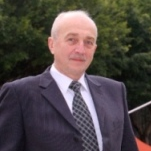Micro and Nano Patterned Substrates for Liquid Crystal Alignment
A special issue of Crystals (ISSN 2073-4352). This special issue belongs to the section "Liquid Crystals".
Deadline for manuscript submissions: closed (20 September 2017) | Viewed by 30136
Special Issue Editor
Interests: liquid crystals; electrooptics; displays; photonics; photoalignment; photopatterning
Special Issues, Collections and Topics in MDPI journals
Special Issue Information
Dear Colleagues,
A new Liquid Crystals section has been established in the open access journal Crystals (https://www.mdpi.com/journal/crystals/sections/liquid_crystals). Because of the many advances in recent years, we are dedicating the first Special Issue of the Liquid Crystals section to the topic “Micro and Nano Patterned Substrates for Liquid Crystal Alignment”. The Special Issue will explore techniques and challenges for micro- and nanopatterned substrates, scientific consequences of the patterns, and technological outcomes. It is intended that both extant and novel methods will be covered, ranging from traditional mechanical techniques adapted to small patterns, to optical techniques, to methods involving non-traditional alignment layers, such as graphene. The goal is to facilitate dissemination of information on methods and outcomes that will benefit the broader community involved in control of liquid crystal alignment.
Prof. Dr. Vladimir Chigrinov
Guest Editor
Manuscript Submission Information
Manuscripts should be submitted online at www.mdpi.com by registering and logging in to this website. Once you are registered, click here to go to the submission form. Manuscripts can be submitted until the deadline. All submissions that pass pre-check are peer-reviewed. Accepted papers will be published continuously in the journal (as soon as accepted) and will be listed together on the special issue website. Research articles, review articles as well as short communications are invited. For planned papers, a title and short abstract (about 100 words) can be sent to the Editorial Office for announcement on this website.
Submitted manuscripts should not have been published previously, nor be under consideration for publication elsewhere (except conference proceedings papers). All manuscripts are thoroughly refereed through a single-blind peer-review process. A guide for authors and other relevant information for submission of manuscripts is available on the Instructions for Authors page. Crystals is an international peer-reviewed open access monthly journal published by MDPI.
Please visit the Instructions for Authors page before submitting a manuscript. The Article Processing Charge (APC) for publication in this open access journal is 2600 CHF (Swiss Francs). Submitted papers should be well formatted and use good English. Authors may use MDPI's English editing service prior to publication or during author revisions.
Keywords
- alignment layer materials
- patterned photoalignment
- mechanically-generated patterns
- electron and ion beam patterning
- novel materials and approaches
- scientific and technological outcomes





